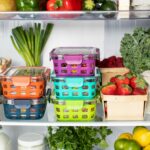There’s nothing quite like a fresh summer salad or a hearty bowl of vegetable stew when the warm months roll around. The vibrant colors, the crisp textures, the promise of health in every bite—it feels like you’re doing something great for your body. But then… the bloating hits. That uncomfortable tightness, sometimes accompanied by pain or awkward gurgles, turns a healthy meal into a regrettable one.
It’s a common complaint, especially when diets shift to include more legumes, greens, and raw veggies. For many, the discomfort comes as a surprise—after all, aren’t we told these are the best foods for our gut? So why does eating “clean” sometimes feel anything but clean?
To get to the bottom of this, gastroenterologist and nutrition expert Dr. Halyna Anokhina—Honored Doctor of Ukraine and professor of medical sciences—offered some insight during an interview with RBC-Ukraine. According to her, the problem isn’t in the food itself, but how we prepare it—and how well our bodies are equipped to handle it.
Legumes: Not So Innocent After All
Beans, peas, lentils, soy—these plant-based staples are packed with protein, fiber, and nutrients. But they also come with a hidden downside. According to Dr. Anokhina, legumes contain a hefty amount of what are known as antinutrients—compounds that interfere with digestion and nutrient absorption.
One of the main culprits? Protease inhibitors. These substances block the enzymes our pancreas produces to break down proteins, making it harder for the body to process what you’ve eaten. Even people with perfectly healthy digestive systems can experience bloating after a few servings of pea soup or lentil stew.
This does not mean you need to avoid legumes entirely, but preparation is everything. Soaking beans before cooking helps reduce antinutrient levels significantly. It’s also important not to overdo it—moderation is key. Interestingly, younger forms of legumes like fresh peas or young asparagus are less likely to cause discomfort, but even they shouldn’t be consumed in excess.
Portion Size Matters More Than You Think
One of the biggest misconceptions about healthy eating is that more is always better. That is rarely the case, especially when it comes to high-fiber or hard-to-digest foods. According to Dr. Anokhina, the most important rule of thumb is simple: your food shouldn’t leave you feeling worse than before you ate it.
If a certain ingredient consistently causes bloating, cramping, or changes in bowel habits, it’s your body telling you something. That does not necessarily mean cutting it out completely. In many cases, reducing the portion size can make a big difference.
It’s all about finding the balance. Start small with foods your gut seems to struggle with, and adjust from there. Some people may handle chickpeas or cabbage in small amounts just fine—but larger servings overwhelm the digestive process.
Avoid the Seeds, Save the Gut
Not all fruits and vegetables are equally easy on the stomach. Dr. Anokhina points out a useful rule: seedless options tend to be gentler on digestion. Carrots and pumpkin flesh, for instance, are well-tolerated by most people and make great additions to a sensitive gut-friendly diet.
Others—like zucchini, cucumbers, and tomatoes—can be easier to digest if you remove the seeds before eating or cooking. While the skins and seeds of these foods are not harmful in themselves, they can contribute to bloating, especially if your digestive system is already irritated or sluggish.
These small tweaks don’t take much time but can make a huge difference in how you feel after a meal. You can still enjoy the full flavor and nutritional benefits of fresh produce without the side effects.
The Bottom Line: Listen to Your Gut
Bloating, discomfort, and digestive distress are not things you need to just “put up with”—especially not in the name of eating healthy. Often, the solution lies not in eliminating entire food groups, but in understanding how those foods interact with your unique digestive system.
Preparation, portion control, and small adjustments in how you cook or serve vegetables can significantly reduce the chances of post-meal bloating. Soaking beans, removing seeds, and easing into fiber-rich meals all help support smoother digestion.
And if you notice a consistent pattern—certain foods always lead to discomfort—it may be worth consulting a specialist. Even healthy ingredients can be a problem if your gut is not handling them well. Your body speaks clearly when something is off; learning to listen is half the battle.










